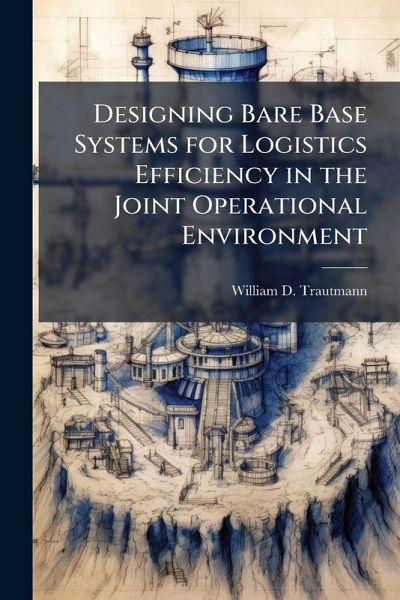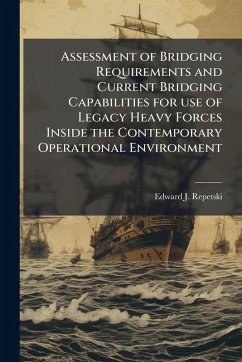
Designing Bare Base Systems for Logistics Efficiency in the Joint Operational Environment
Versandkostenfrei!
Versandfertig in über 4 Wochen
14,99 €
inkl. MwSt.
Weitere Ausgaben:

PAYBACK Punkte
7 °P sammeln!
In 1991, Operations DESERT SHIELD and DESERT STORM marked a milestone in joint and coalition operations. However, it also highlighted interoperability issues, which subsequently drove joint doctrine, tactics, and concepts of operations. Today, the Department of Defense's (DOD) transformation is hurtling the services past interoperability towards joint interdependence, but they are not there yet. Capability seams and gaps create sub-optimal efficiency and compel the services to pursue organic capability that when aggregated, results in an overly redundant structure.2 This mindset has driven a s...
In 1991, Operations DESERT SHIELD and DESERT STORM marked a milestone in joint and coalition operations. However, it also highlighted interoperability issues, which subsequently drove joint doctrine, tactics, and concepts of operations. Today, the Department of Defense's (DOD) transformation is hurtling the services past interoperability towards joint interdependence, but they are not there yet. Capability seams and gaps create sub-optimal efficiency and compel the services to pursue organic capability that when aggregated, results in an overly redundant structure.2 This mindset has driven a service-centric approach to bare base capability and resulted in capability overlap and logistics inefficiency. Considering the fiscal struggle to transform and re-capitalize military forces, it is imperative that the DOD find operational efficiency from the simplest to the most sophisticated weapon system. While not glamorous, bare base capability is a critical enabler to expeditionary operations, which in turn, is critical to United States' National Security and Defense Strategies. Therefore, in the context of a joint operational environment, the services' goal should be to present a combatant commander with effective bare base capability at the least cost. This work has been selected by scholars as being culturally important, and is part of the knowledge base of civilization as we know it. This work was reproduced from the original artifact, and remains as true to the original work as possible. Therefore, you will see the original copyright references, library stamps (as most of these works have been housed in our most important libraries around the world), and other notations in the work. This work is in the public domain in the United States of America, and possibly other nations. Within the United States, you may freely copy and distribute this work, as no entity (individual or corporate) has a copyright on the body of the work. As a reproduction of a historical artifact, this work may contain missing or blurred pages, poor pictures, errant marks, etc. Scholars believe, and we concur, that this work is important enough to be preserved, reproduced, and made generally available to the public. We appreciate your support of the preservation process, and thank you for being an important part of keeping this knowledge alive and relevant.












